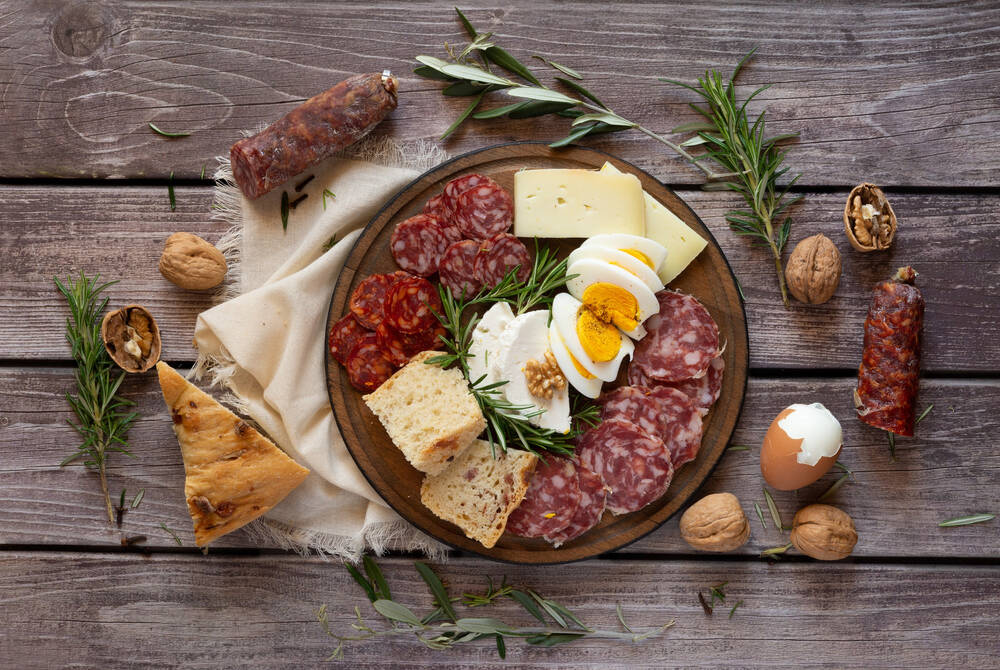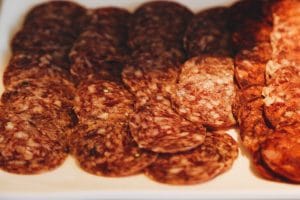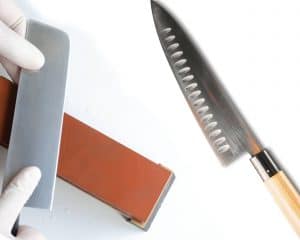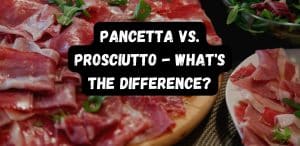Hard Salami vs. Genoa Salami: How Are They Different?
Important Note: When you buy through our links, we may earn a commission. As an Amazon Associate we earn from qualifying purchases. Content, pricing, offers and availability are subject to change at any time - more info.
Salami is a type of cured sausage that is made from ground meat and seasonings. Two of the most popular versions are hard salami and Genoa salami. What’s the difference? One difference is the seasoning. Hard Salami gets its flavor from garlic, black pepper, mustard seeds, saltpeter, sugar, and wine. Genoa Salami uses oregano, fennel seeds, coriander seed to create its distinct taste.
But, of course, there’s more. Read on to find out.
- The History of Salami
- What is Hard Salami?
- What is Genoa Salami?
- Hard Salami vs Genoa Salami: Nutritional Value
- Hard Salami vs Genoa Salami: Comparison Chart
- Increasing the Shelf Life of your Salami
- Key Takeaways
The History of Salami
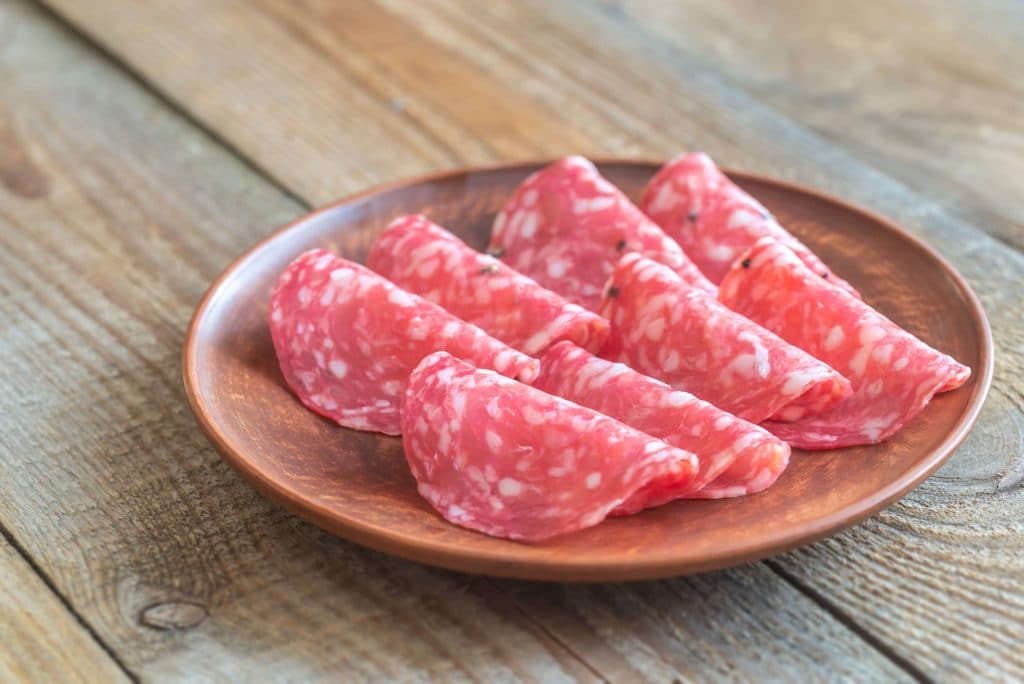
Salami has been around for hundreds of years, with records dating back to the 16th century. It is believed that salamis were first created in Europe, where people cured their meat using salt to preserve it. Food historians believe that these ancient Europeans may have boiled their meats before putting them into salt to make them last longer. They also claim the meat was sliced into strips and then hung it in the air, which could be why salami is often called “air-cured.”
The first recorded mention of this type of sausage can be found in a cookbook from 1615 by Antonio Latini. In this book, Latini describes it as “a type of seasoned meat that is to be eaten sliced very thin.”
In the 1800s, salamis became a popular dish served at breakfast. It’s also believed that this was due in part to their low price and high availability during these times.
Today, there are countless types of salami that can be found in specialty shops, grocery stores, and even online, with hard salami and Genoa salami being the most popular types.
What is Hard Salami?
Hard Salami, sometimes referred to as dry-cured or cooked sausage, is characterized by its firmer, dryer texture and slightly darker color. It is made from ground beef but may also contain pork. Its flavor includes garlic, mustard seeds and wine.
Originating in Germany, hard salami has a marbled appearance. It’s not typically smoked or cooked instead, going through the curing process without a casing. Hard salami can be used as a pizza topping, sandwich filling, or simply eaten on its own.

What is Genoa Salami?
This variety of salami was originated in Genoa, in Northern Italy. Hence, the name and traditional Italian flavor. Genoa is a hilly area in Northern Italy where pig farming is a primary source of income and meat. Because there are no grasslands or plains in Genoa, raising cattle is not an option.
Traditional Genoa salami is prepared using raw pork – 60% lean mean and 40% fat. In some variants, you can also see beef meat in equal parts. Genoa salami has a characteristic aroma as it is air-dried at a specific temperature under a specific humidity level for 2-3 months. Compared to hard salami, Genoa salami has a smoky aroma and a distinctive flavor.
Genoa salami is used for toppings for pizza or stuffing for calzones. It’s also a popular ingredient for frittatas combining nicely with goat cheese and potatoes.
Hard Salami vs Genoa Salami: Nutritional Value
The following table shows the nutritional value found in 10 grams each of hard salami and Genoa salami:
| Nutrients | Hard Salami | Genoa Salami |
| Protein | 2.26 grams | 2.07 grams |
| Cholesterol | 8 mg | 10.2 mg |
| Fatty Acids – total saturated | 1.189 grams | 1.20 grams |
| Fatty Acids – total polyunsaturated | 0.374 grams | 0.271 grams |
| Fatty Acids – total monosaturated | 1.6 grams | 1.7 grams |
| Sodium | 226 mg | 182.6 mg |
| Iron | 0.13 mg | 0.19 mg |
| Potassium | 38 mg | 33.4 mg |
| Total Lipid | 3.37 grams | 3.33 grams |
Hard Salami vs Genoa Salami: Comparison Chart
| Attributes | Hard Salami | Genoa Salami |
| Made Of | Hard salami is made using ground beef | Genoa salami is made using pork meat |
| Fat Content | Low fat content | High fat content |
| Color | Darker, marbled appearance | Lighter |
| Origin | Germany, Poland | Italy, Genoa |
| Flavor | Fermented | Smoked |
Increasing the Shelf Life of your Salami
While hard and Genoa salamis are preserved to last longer, they can get spoiled if not stored properly. Fortunately, there are several ways to increase the shelf life of your salami. The best option is to wrap your hard or Genoa salami in cheesecloth or butcher paper rather than storing it While hard and Genoa salamis are preserved to last longer, they can spoil if not stored properly. The best option is to wrap your hard or Genoa salami in cheesecloth or butcher paper rather than storing it in plastic bags. This ensures proper airflow, preventing the accumulation of moisture. Avoid freezing salami as it can affect the natural flavor and texture.
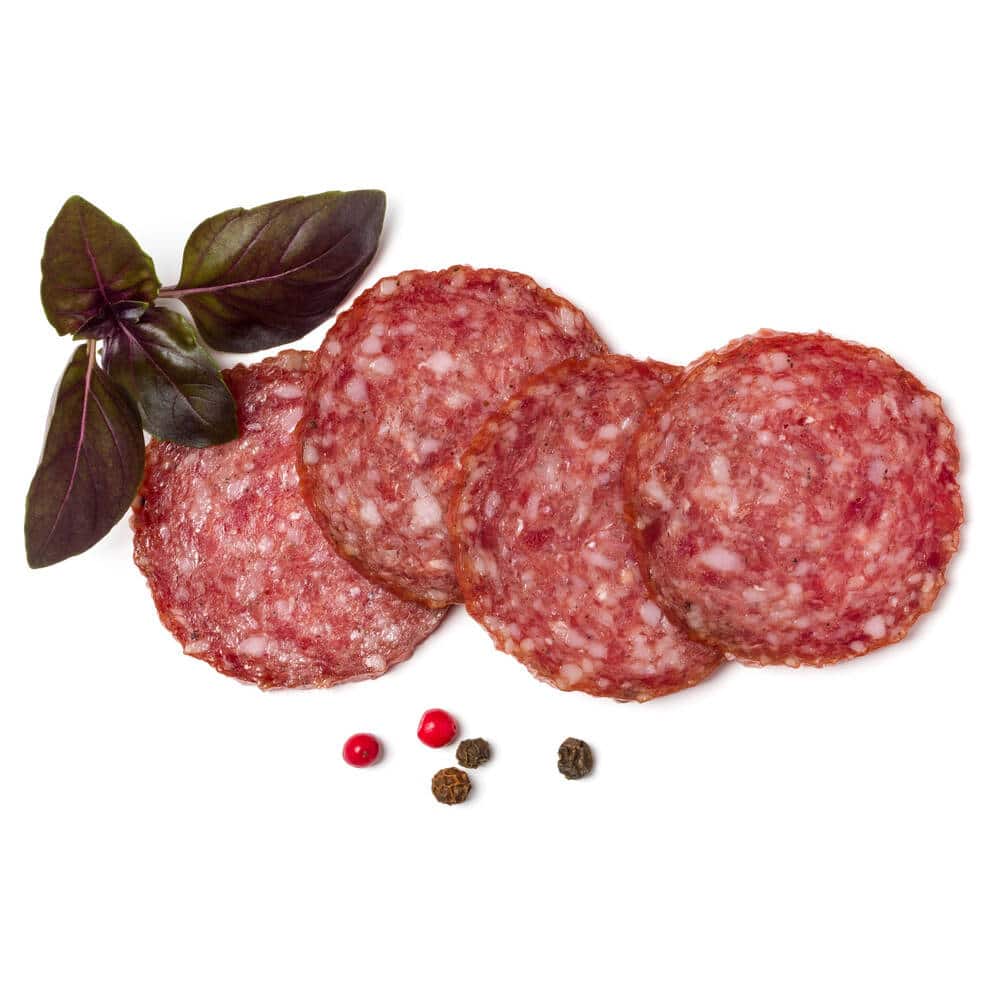
Key Takeaways
- The main differences between Genoa and hard salami are the spices, the meat used and casing. Genoa salami, primarily made from pork is cased and hard salami, made with beef, is not.
- Hard salami has a lower fat content than Genoa salami. You’ll see the circles of fat more prominently in Genoa salami.
- Germany is the home of hard salami, a country known for its extensive variety of sausages. Genoa salami harkens from Italy in a region where pork farming is prevalent.
